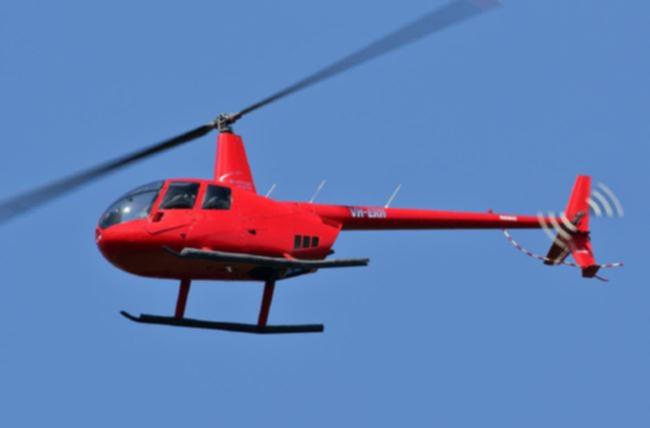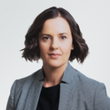Pilot Blake Wilson flew chopper over his shared apartment twice before fatal crash into Cairns hotel roof

The young pilot who died after he flew a helicopter into the rooftop of a Cairns hotel was under the influence of alcohol, the national transport safety investigation has found.
The Australian Transport Safety Bureau on Thursday said chopper flight, piloted New Zealand man Blake Wilson in the early hours of August 12, was “unauthorised” but inexplicably “purposeful”.
The ATSB revealed that the 23-year-old turned off the helicopter’s strobe lights and flew over his apartment twice before crashing into the top of the seven-storey hotel within five minutes of taking off from Cairns Airport. No evidence was available to explain his intentions but the bureau report said Wilson had “significant blood alcohol content”.
Sign up to The Nightly's newsletters.
Get the first look at the digital newspaper, curated daily stories and breaking headlines delivered to your inbox.
By continuing you agree to our Terms and Privacy Policy.The destroyed Robinson R44 Raven II, registered VH‑ERH, was owned by Wilson’s employer Nautilus Aviation.
“The investigation found that the pilot conducted an unauthorised and unnecessary flight at night, while affected by alcohol,” said ATSB Chief Commissioner Angus Mitchell.

“The pilot did not hold the appropriate endorsements to fly at night, did not have any experience flying the R44 at night, and they conducted the flight well below the 1000 ft minimum height for flight over built-up areas.”
The ATSB also produced a three-minute video with animation to accompany the report’s release which shows the helicopter flying over Wilson’s apartment building twice before hitting the DoubleTree by Hilton hotel roof just before 2am.
“Using a combination of CCTV footage, witness accounts, GPS data from the helicopter and air traffic control surveillance radar data, the ATSB was able to develop a detailed sequence of events of the accident flight,” Mr Mitchell said.
The ATSB’s report said that prior to the flight, the young pilot had been socialising with friends at various venues in Cairns, where he had been drinking.
Wilson and his friends had returned to their shared apartment around 11pm on Sunday August 11.
CCTV footage from the apartment carpark showed Wilson walking to a vehicle at 1.09am on August 12 and driving away.
Wilson then gained access to Nautilus’s premises at Cairns airport after entering a code into a security door keypad, and then to the hangar and the helicopter.

Nautilus chief executive Aaron Finn has previously said that the keys were already in the helicopter, which was standard practice.
CCTV footage from the operator’s hangar showed Wilson wheeling VH-ERH out onto a helipad just after 1.30am.
Airservices Australia operates a control tower at Cairns Airport that is staffed 24 hours a day. The controller on duty at the time of the crash told the ATSB they did not notice any airport activity outside of the tower.
“The controller recalled that they heard unexpected radio interference sounds on multiple occasions and checked the INTAS console for any new flight plans that may have appeared in the system,” the report said.
“Recorded INTAS data shows the controller interacting with it at 0143:11 which was around the time the accident flight helicopter was being started.”
“There were Australian Federal Police officers and airport safety officers on duty at the time the pilot was preparing the helicopter, but they were not in the vicinity of the hangar.
“Additionally, by the pilot turning off the helicopter’s strobe lights, there would have been no visual cues to attract the attention of these officers.”
Wilson took off from Cairns Airport at 1.46am. He then flew the chopper over the metropolitan area and then out to sea before returning and crashing into the roof of the hote less than five minutes later.
It had been drizzling that night, which would have affected visibility, but “there was an abundance of artificial lighting from city buildings and street lighting”.

“We know from GPS and air traffic control radar data that the helicopter departed Cairns Airport shortly before 1:47am, while CCTV footage showed that the helicopter’s strobe lights were turned off by the pilot,” Mr Mitchell said.
After taking off, the helicopter headed south towards the Cairns city centre, flying over the pilot’s apartment building and then tracking to the northern end of the Cairns wharf complex, where it completed an orbit before heading north towards the marina and continuing along the coastline.
After crossing the coastline and flying over the pilot’s apartment a second time, the helicopter circled back towards the foreshore, following it for about 1km.
Throughout the flight the helicopter’s altitude did not exceed 500ft.
“Two security cameras recorded very brief portions of the final part of the flight and showed the helicopter pitching up, then almost immediately descending steeply before colliding into the roof of the hotel at about 1.51am,” Mr Mitchell said.

“Wreckage distribution and impact marks indicate that the helicopter was inverted at impact.”
Most of the helicopter came to rest on the hotel roof and was destroyed by impact forces and a fuel-fed post-impact fire. Wilson was fatally injured.
Parts of the main rotor blade were found in the hotel rooms below the accident site, while the helicopter’s instrument panel, main rotor head and most of the main rotor blades were found within the hotel grounds.
A portion of the same main rotor blade that struck the hotel windows was found in parkland across the road.
The hotel was nearly full, with almost 400 guests evacuated, and many people were still walking around Cairns at 1am.
A fire developed which was contained on the roof of the hotel before being extinguished.
There were no injuries to hotel guests, staff or passersby. However the couple, whose room was directly below the point of impact, were treated for shock and smoke inhalation.

The Nightly previously revealed that real-time tracking of the fatal flight showed the young pilot from New Zealand possibly flew the R44 as low as 62 feet above Cairns Esplanade before crashing into the building.
Exclusively obtained flight-tracking data from government-owned WebTrak showed the helicopter was erratically flown up and down Cairns Esplanade and in loops, at wildly varying altitudes, before stopping in a position consistent with the location of the hotel where it crashed.
The altitude tracker indicated that the aircraft oscillated between heights of 62 feet and 440 feet during the four-and-a-half minute flight, before stopping at an altitude of 125 feet when it slammed into the hotel roof.
Cairns Esplanade is a strict “no-fly zone” and CASA regulations stipulate that helicopters must be operated at altitudes of at least 1000 feet above ground level for built-up areas and 500 feet above ground level everywhere else.

Nautilus Aviation hired Wilson as a ground crew member in April 2024.
The company, owned by North Queensland billionaire Chris Morris, is known for tours and private charters.
Wilson, who had previously flown R44 helicopters, held valid New Zealand and Australian commercial helicopter pilot licences but was not employed or approved to fly Nautilus’s helicopters.
On the day of the accident, Wilson was due to travel to Horn Island to start a new role within Nautilus driving a fuel truck and re-fuelling aircraft.
In August, Mr Finn said he was baffled at what motivated his “model employee” to go to the airport at about 1am before taking the helicopter.
He said that Wilson had been named “employee of the month” just days before he died. “We are all devastated,” he said.
Wilson, a former tour guide in Queenstown, obtained his commercial pilot licence through Christchurch Helicopters in September 2022.
At the time, he had shared his pride in obtaining his commercial pilot licence on social media.
“Big thanks to Christchurch Helicopters for giving me the opportunity and tools to launch into the start of my career,” he posted on Instagram.
“Also my friends, family, and others who have supported me and helped me fulfil this dream. It’s the closure of the first chapter in this adventure, and I look forward to many more.”
Christchurch Helicopters said: “Blake was well-liked by staff and his classmates”.
When he moved to Queensland earlier this year, Wilson shared that he was “excited to see what this adventure brings”.
His final social media post on May 3 featured a photo of a Cairns waterfall captioned: “Gotta go to the places that the crocs can’t get ya. Chasing Waterfalls definitely isn’t a bad way to spend days off.”
At the time of his death, Wilson had accumulated 157.8 hours of total aeronautical experience. Only 16.8 hours of which were flown in Robinson R44 helicopters.
The last flight recorded in the pilot’s logbook was in February in New Zealand. There were no entries in the pilot’s logbook to indicate they had previously flown a helicopter in Australia.
The ATSB report said that a toxicology report indicated Wilson had a significant blood alcohol content. A post-mortem examination report was not available at the time of the ATSB’s publication.
The ATSB conducts “no blame” transport safety investigations to uncover and share safety concerns and lessons and not for the purposes of taking administrative, regulatory or criminal action.
The ATSB finalised the investigation within two months of the crash after determining it unlikely that broader safety issues or lessons would be uncovered.
Its investigators were unable to explain the pilot’s actions.
“The flight was an unauthorised but purposeful act, however the ATSB did not determine the reason the pilot elected to conduct the flight,” Mr Mitchell said.
“The ATSB can conclude from the available evidence that there were no airworthiness factors with the helicopter that likely contributed to the accident.
“I would like to acknowledge that the nature of this accident is deeply distressing to the pilot’s family, and they have asked that I share with you their request for privacy at this time.”

